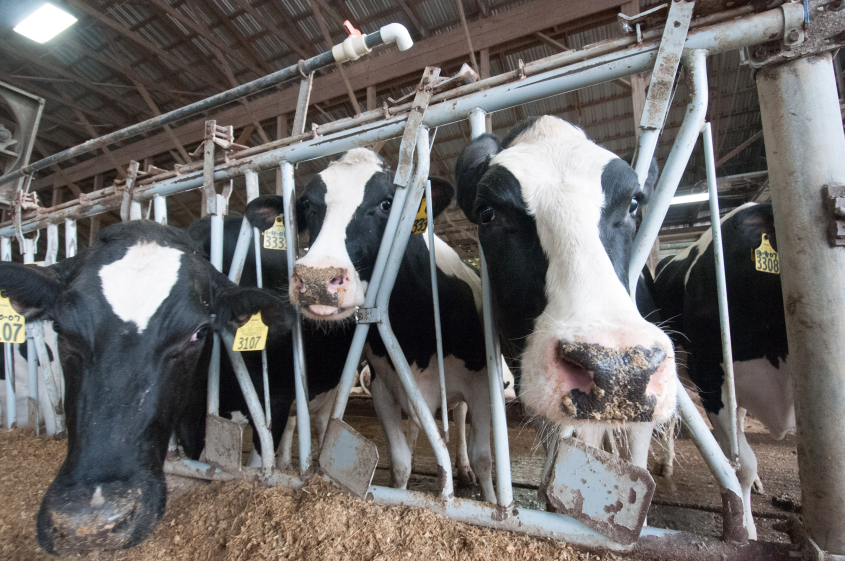
The February Paper of the Month is from Proceedings of the Nutrition Society and is entitled: ‘Environmental and genetic factors influence the vitamin D content of cows’ milk’. Authors: R. R. Weir, J. J. Strain, M. Johnston, C. Lowis, A. M. Fearon, S. Stewart and L. K. Pourshahidi
Vitamin D is commonly known as the “sunshine vitamin” because UVB exposure from sunlight is the main source of this essential micronutrient for most of the population. What is less known perhaps, is that cattle can also produce vitamin D following UVB exposure in the same manner to humans, as well as that obtained from dietary sources, such as silage/feed concentrates. Vitamin D is important in cattle for the regulation of calcium status to help prevent milk fever, and for bone health. For consumers, in the face of limited dietary sources of vitamin D, dairy products remain a worthwhile contributor to dietary vitamin D intake, particularly in children. In fact, several countries currently implement a mandatory or voluntary fortification policy for fluid milk. The aims of the present review were to provide an overview of the genetic and environmental factors that influence the vitamin D status of dairy cattle, and examine how these factors influence the vitamin D content of the milk produced.
Similarly to how a mother’s vitamin D status can affect the vitamin D content of her breastmilk, in general, the vitamin D status of the cow impacts the vitamin D content of the milk produced, but there is a limited amount of research published in this area. Results of two unique Danish studies eloquently demonstrated that cattle can produce vitamin D through all areas of their skin (not just in the udders or muzzle where hair coverage is scarce) and that there is no effect of dominant coat colour (black or white) on the synthesis of vitamin D following UVB exposure. A seasonal variation in the vitamin D content of cows’ milk has been well documented, with concentrations found to be higher in the summer months than in the winter. A shift from traditional practices when cattle are out to graze during the summer months to more year-round housing, also minimises the cattle’s exposure to the sun. This has been shown to negatively influence the vitamin D content of milk produced, unless an alternative dietary source of vitamin D is given when cattle are kept indoors. Therefore differences in farming practices both throughout the year and between different farms can cause a natural variation in the vitamin D content of the milk produced. Other novel on-farm studies have more recently provided promising evidence on the efficacy of vitamin D bio-fortification of cow’s milk, using supplemental dietary vitamin D and/or UVB light sources.
Overall, this review highlights a need for further research to fully elucidate how farmers could manipulate the factors identified to their advantage with respect to increasing the vitamin D content of milk and standardising it across the year. Moreover, a more comprehensive update of vitamin D in milk across the UK and Ireland is warranted. Notwithstanding the clear and established health benefits for the animal associated with an improved vitamin D status, this approach potentially could also provide a premium product with an improved vitamin D content for the eventual benefit of the consumer.
